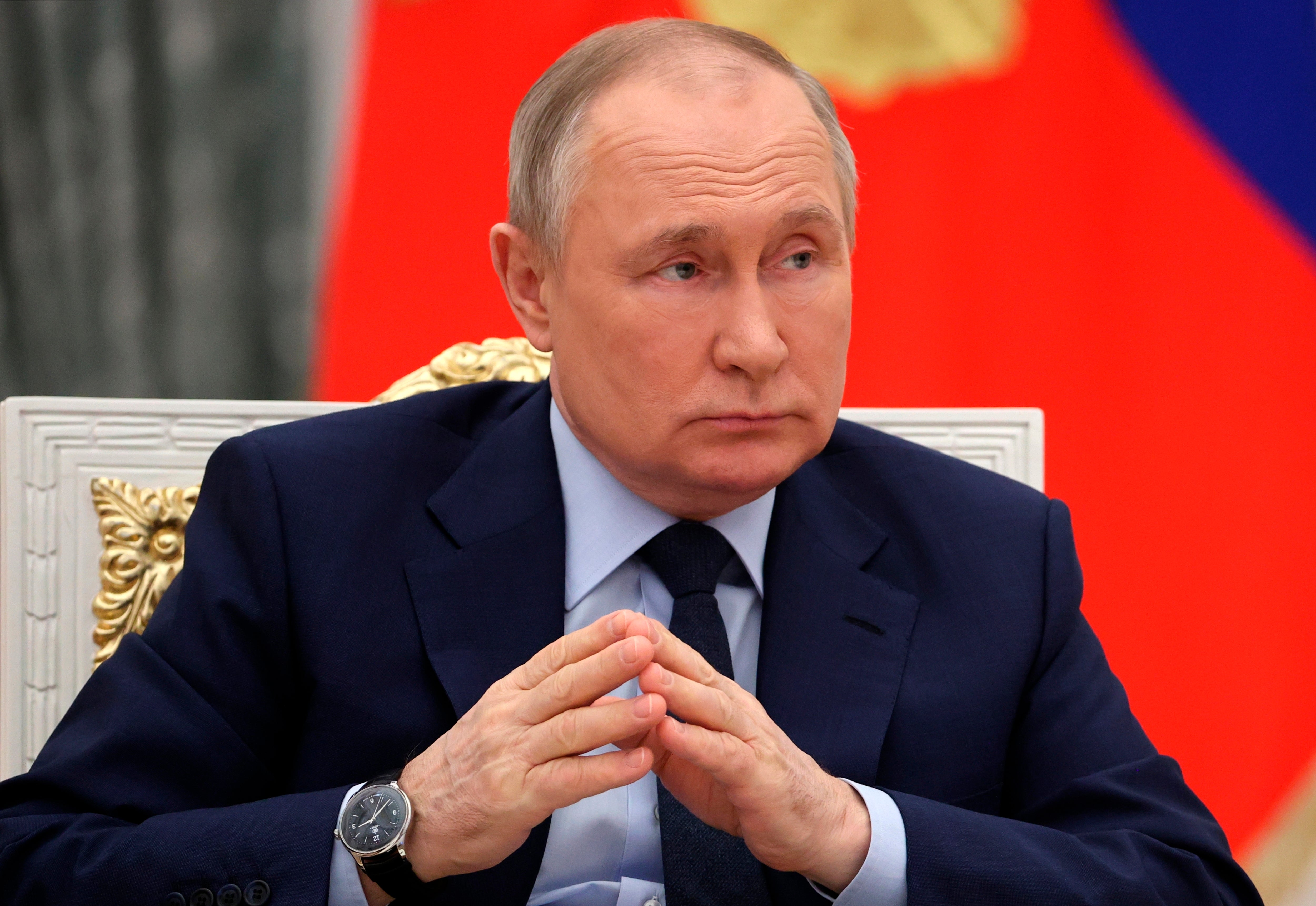Failure to end Ukrainian resistance in Mariupol ‘hampering Russian advance’
Western officials said President Putin may want to score a military success ahead of May 9 Victory Day parade in Moscow.

The failure of Russian forces to take the last pocket of Ukrainian resistance in the besieged city of Mariupol is hampering their latest offensive, Western officials have said.
President Vladimir Putin has said his forces would seek to seal off the vast Azovstal steel works, where Ukrainian marines have been holding out, rather than risk storming it.
However, officials said that would limit the numbers of troops that Russia could release for operations in the Donbas region which the new focus of their operations.
“Doing that around that area is not a trivial task if you want to seal it completely,” one official said.
If President Putin is going to stand on the May 9 Victory Day, he will want to do so on the back of Russian forces not being ritually humiliated in Ukraine which is pretty much been happening so far
“That may still limit the ability of those forces to get themselves sorted to take part in operations in the Donbas.”
Nevertheless, officials said it was still possible for the Russians to make military gains which President Putin could claim as a success, although it was unlikely to be swift.
One official said they had concentrated sufficient troops potentially to “surround and destroy” a significant proportion of Ukraine’s best forces, if they used their own forces “intelligently”.
They could then seek to establish full control over the Donbas – already part-held by pro-Moscow separatists – with a land bridge from Crimea to Russia.
“If they were to surround those forces and grind them down over time that would be enough for Putin to be able to claim it as a win,” the official said.
In the “really worst case scenario” it could embolden the Russians to revive some of their earlier war aims, such as an assault on Kyiv or taking the port city of Odesa, effectively cutting off the Ukrainians from the sea.
The official said it would would require sustained Western support to the Ukrainians in a conflict which could last “most of the rest of this year”.
The Pentagon has said the Russians have 76 battalion tactical groups in the south and east of Ukraine – the equivalent of 45,000 to 60,000 troops.
However, Western officials many of the Russian units had not had time to properly reconstitute after being receiving a mauling by Ukrainian forces in the north of the country in the failed advance on Kyiv.
As a result, they were being fed into the offensive in a “piecemeal” fashion with limited impact, taking “relatively small amounts of terrain”.
One official said it may be driven by a desire by the Russian leader to secure a tangible success in time for the Victory Day parade in Moscow on May 9 marking the defeat of the Nazis in the Second World War.
“If President Putin is going to stand on the May 9 Victory Day, he will want to do so on the back of Russian forces not being ritually humiliated in Ukraine which is pretty much been happening so far,” the official said.
“I think that may have been a factor in their decision politically to commit their forces into the Donbas ahead of that force being entirely reconstituted and prepared.”
The official said that while the performance of the Russian forces had improved since the first day of the invasion, they were still not operating as a true “manoeuvre force”.
“They are still driving down roads in long columns. That makes them very vulnerable because they have a very exposed flank,” the official said.